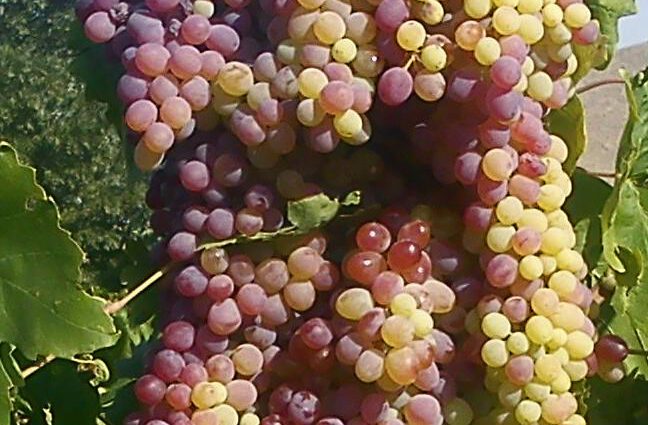Grape Original: grape variety
The grape “Original” was created in Ukraine by crossing the varieties “Datie de Saint-Valier” and “Damascus Rose”. Its name speaks for itself – its fruits have a very unusual appearance. It is most common in its homeland – in Odessa and the region.
Grape variety “Original”: distinctive features
Its yield can be either medium or high, depending on weather conditions and the age of the bush. It is possible to collect 40-100 kg of berries from one plant. Harvesting begins in the second half of September. From the opening of the kidneys to full maturation, at least 135 days should pass.
Grapes “Original” – medium late, fruits ripen in September
This variety has the following characteristics:
- The berries are large, weighing 5-7 g. They have an unusual shape – they are rounded at the base, elongate and sharpen to the tip, and may even be slightly curved. The color is pink, may have a lilac hue.
- The pulp is not dense, the taste is pleasant, sweet. There are 1-2 bones. Sugar content is high – up to 21%, acidity is only 5-6 g / l.
- The peel is strong, but does not spoil the table quality of the berry.
- The bunches are loose, can be conical and cylindrical. The berries are loose on the stalks.
- The leaves are large, with a deep division into 5 lobes.
- Flowers are bisexual.
The plant has great vigor. But it cannot boast of frost resistance, it can withstand temperatures not lower than –21 ° С. Good disease resistance, usually 2-3 sprays of foliage per season are enough for prevention.
This variety has a dark-fruited variety – “Original Black”. It is identical in properties and cultivation characteristics with its pink counterpart. It is a hybrid of two varieties – “Korna nagra” and “Datie de Saint-Valier”.
To successfully grow “Original” in your garden and get a high-quality harvest, you need to know about some of its features:
- The bush needs timely pruning. Usually leave an average length of the shoot, leaving 6-8 buds. You can focus on the total number of buds per bush. There should be an average of 50 of them per plant, and weak and diseased shoots are completely removed. It is important to monitor the thinning of the bush so that it receives enough light and sunlight.
- The cuttings take root and develop at an average rate. The cultivar is well suited for grafting, usually phylloxera-resistant rootstocks are used for this.
- Rainy weather can cause peas. Then the bunches need to be thinned out and the spoiled berries removed. For the winter, the plant needs to be covered, since it is southern and does not tolerate a strong drop in temperature.
If grown in mild climates, you can wait for the harvest from stepchildren. Winegrowers talk about the good quality of such fruits. But this greatly overloads the bush, most often the stepsons break out immediately after their appearance.










